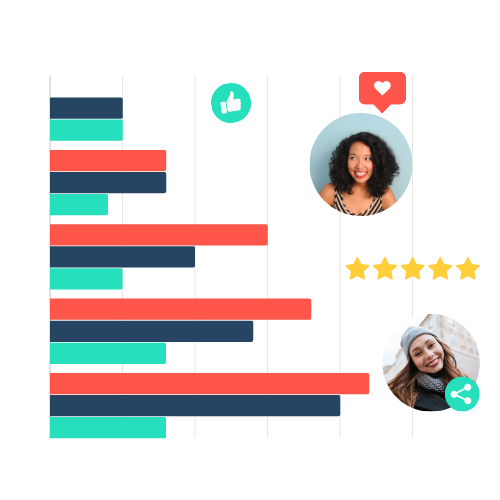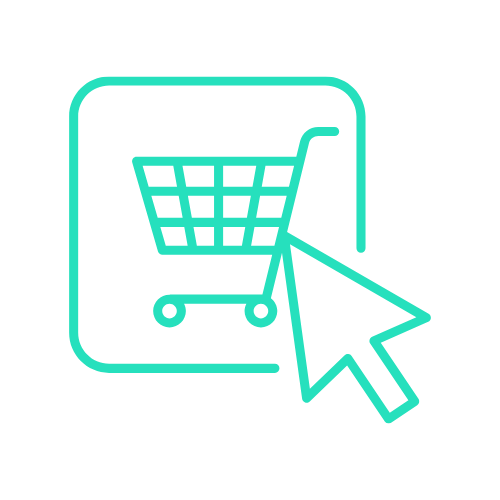All marketers believe in using data to optimize their marketing spend and gather consumer insights, but many struggle with the right data to capture, and the clock is always ticking. Former CEO of Yahoo! Marissa Mayer once said, “With data collection, ‘the sooner the better’ is always the best answer.”
You might have heard of third party data or first party data, but what the heck is zero party data, and why is it being considered a goldmine for marketers?
What is Zero Party Data?
Zero party data is information a consumer shares directly and intentionally with a company or brand, and it typically includes personal preferences, emotional leanings, and lifestyle behaviors.
When it comes to the future of marketing, successful consumer interaction will be more empathetic, purposeful, and customer-first. Zero party data helps brand marketers achieve this.
What is the Difference Between First Party and Zero Party Data?
It might seem like many parties are going on here, so let’s review what each means.
- First Party Data: This is behavioral data collected as you interact with a particular site or app, and it is entirely owned by the company or brand that runs that website (for now). It typically happens in the background through website cookies tracking on-page behavior or through profile information and transaction history. It can also be collected through loyalty program participation or digital marketing engagement, such as email opens and clicks.
- Second Party Data: This kind of data is essentially accessing another organization’s first party data. It involves direct communication where both companies agree on terms and map out the exchange of data. While second party data still puts a middle man between you and your consumer, the data is considered valuable as you have full visibility into where the data came from, but it must be continuously purchased from another organization.
- Third Party Data: When a bunch of websites take their first party audience data and package it to someone else through an aggregator, to that buyer, the data is now considered third party data. This data can then be used for advertising and targeting purposes. While third party data has been widely used, the buyer has no direct relationship with an individual consumer, which means data can become outdated and unreliable. Eventually, this impedes the effectiveness and quality of campaigns.
- Zero Party Data: Unlike the passivity of first, second and third party data, zero party data is given by a consumer directly, and it usually relates to more high-order attributes like values, lifestyle, and preferences. It is unique access a consumer provides for how to interact and recognize them. This makes zero party data one of the most prized data sets.
Why is Zero Party Data Important?
Marketers face two key challenges that make zero party data so important today. The first (and often most pressing) issue is navigating and maintaining market share in a cookie-less world. The second is the demand for personalized brand engagement to secure long-term loyalty.
Ultimately, zero party data allows you to stop using guesswork to engage with consumers and drive real emotional loyalty that boosts customer lifetime value. This is why we’re seeing headlines like “Zero Party Data is the New Oil.”
Navigating the disappearance of third party cookies with zero party data

We can all agree that limitless data collection has led to many innovative digital business practices over the past decade. Consumers benefited from more tailored messaging, and marketers enjoyed better targeting, higher conversion, and more reliable measurement. However, unchecked data collection has led to a flurry of privacy, security, and transparency concerns.
Google shook the advertising world when it announced that it would do away with third party cookies. While it is approaching the change in a phased manner, recently delaying plans till 2024, it has still forced many brands to change their approach to advertising and overall consumer relationships.
The disappearance of cookies will leave many brands blind to data-backed insights and will result in gambling with marketing dollars and risking customer loss.
Google is just the beginning. Consumers are becoming well-informed about the uses of their data. They increasingly demand control and transparency, leading to legislation like the California Consumer Protection Act (CCPA) and the General Data Protection Regulation (GDPR) abroad.
Marketers need to be prepared for a world where they won’t have the firehose of third party data made available to them.
Marketers are turning to zero party data to cultivate direct relationships with prospective customers. In a recent study from Forrester, 90% of marketers are actively responding to data depreciation by capturing zero party data within the year.
Using zero party data to meet the demand for personalized brand engagement that secures loyalty
When it comes to brand engagement, the marketing landscape is undergoing a paradigm shift. While content used to be “king,” today it is experiences that takes the crown. 80% of consumers are more likely to do business with a company that offers personalized experiences.
Research from McKinsey found that personalization can deliver five to eight times the ROI on marketing spend and can lift sales by 10% or more. It is worth the investment to connect with consumers.
It might feel like you are being asked to pull off a spectacular magic trick. The majority of consumers support data transparency and privacy. Still, they also want a customer experience rich with personalized interaction and convenience.
That’s precisely why zero party data can be the ace up your sleeve.
When collected and used with intention, zero party data can enable you to achieve a more holistic customer view and align your brand more authentically and meaningfully with consumers.
This kind of data can fuel a replicating cycle of greater sharing and personalization, driving progressively higher levels of trust, insights, and loyalty while simultaneously helping you to “future proof” against widespread industry changes.
How to Collect Zero Party Data

It is vital to remember that consumers don’t automatically give up their data to brands. Something like a zero party email campaign doesn’t work, nor does traditional website data collection. And don’t even think about a zero party advertising campaign.
Zero party data is best collected through engaging digital touchpoints that ask consumers directly for further information. It should be done progressively and accumulate over time. This fosters relationship building that secures consumer trust and delivers brand value.
Amassing zero-party data should be a delicate dance of asking and receiving, and it only works when the consumers believe they are receiving something valuable in return. If you can adequately demonstrate value to customers, research has found that 79% of consumers would be willing to give you their information.
One of the best ways to do this is through an >online brand community.
Marketers must invigorate loyal customer communities and cultivate a living, breathing, consumer-facing world for zero party data to be collected and acted upon.
An online brand community integrated into the marketing strategy is a powerful way to connect data to the bigger picture and encourage consumers to participate in something they believe in.
Zero party data can be collected through things like profile questions, surveys, polls, quizzes, or discussions. This differs from traditional market research or customer feedback because the right technology platform can append the data to an individual’s customer profile.
For example, suppose you delivered a survey or lifestyle quiz asking consumers to share their hobbies, and a consumer identified they had an interest in photography. It’s important to find a technology partner that can help you “store” this information in the consumer’s profile so you can then deliver a relevant offer like a photo contest.
Popular food delivery service, Grubhub, started its Tastemakers online brand community specifically to build a zero party data relationship with passionate diners and engaged college students. With always-on access to their TINT-powered online brand community, Grubhub can obtain predictive insights that make delivering relevant offers to college students easy, and most importantly, it is easy to scale.
Data must be collected with intention, and you should plan strategically how each solicitation should be used to enhance the consumer experience. Otherwise, consumers will grow weary of giving and giving without anything of value in return.
How to Use Zero Party Data
Once you start collecting zero party data, the question becomes how best to use it to maximize consumer loyalty. Marketers should no longer view data as a passive activity happening in the background but as an active expression that a consumer knows and trusts you.
Ultimately, data can be viewed as a currency of trust, which leads to lasting loyalty. Here are some keys ways to use it:
Offer unique content and helpful resources

When you get a window into consumers’ interests and passions, you can offer branded content that is considered helpful instead of irrelevant and intrusive.
For example, if a consumer tells you they frequently look at reviews while shopping in-store at Target, you can send them a link to your product’s online review page.
Or, if your consumer said they were thinking about renovating their home soon, you might send them an article or video with idea boards and decor inspiration. This can also be used in creating a valuable ecommerce or app experience for them.
A company like Yelp has created a preference center dedicated to acting on zero party data. To personalize recommendations, Yelp uses zero-party data to highlight restaurants’ attributes that align with customer preferences so customers can come to their own conclusions.
Invite targeted consumers to relevant brand experiences
A brand experience can be anything from an interactive digital activity to a free product sample or attendance at a local event. You can invite consumers to engage with your brand online or offline when you have zero party data.
It’s essential always to let consumers know that they are receiving this invitation because of the shared data and always to thank them. This helps reinforce the usefulness of sharing information.
Build a connection with other like-minded consumers

We’ve all experienced clicking with someone by saying, “oh I love that brand!” Especially today, brands are a prominent backdrop for creating community connection. Zero party data is a great way to start a lively discussion thread on the most important topics to your consumers.
With other kinds of data, a baby brand might get behavioral information about moms buying diapers. You might even know the purchase frequency, the brands they buy, and which sites they frequent.
But with zero party data, that same baby brand can identify the moms in the trenches of parenting who are struggling with a diaper blowout from the baby while the toddler throws their food across the room and the dog throws up. This is emotional information that you cannot get from cookies, and it can create connection opportunities for people to vent, exchange tips and tricks, and express themselves to people who get it.
Deliver tailored promotions and incentives
One of the best ways to create value in consumer data sharing is through tailored promotions. Consumers can easily connect the dots when they receive a special discount code or coupon for their information.
When you’re first building your zero party data engine, this is a great way to show value to consumers immediately.
Arm & Hammer’s Cat Litter brand started its Kitty Krew community as a home for passionate cat owners. To boost the community’s launch and fuel zero party data collection, consumers were entered to win a special cat charm bracelet.
Customer Appreciation
Sometimes, we can think of consumer data as a behind-the-scenes practice, but people notice when you’re paying attention to them. Zero party data can be used to build brand equity by simply showing that you care. 77% of consumers say they favor brands that ask for and accept customer feedback.
Zero party data helps you go above and beyond in customer appreciation. It can be anything from surprise and delight moments, offering complementary products or services, personal notes, or even involving consumers in upcoming company decisions.
Fast-growing condiment brand Sir Kensington’s often includes hand-written thank you notes and provides additional resources like nutritionists to its online brand community, Taste Buds.
How TINT Can Help with Zero Party Data
TINT believes in empowering brands to take back their consumer relationships from third party sites. Our all-in-one, community powered marketing platform secures your consumer relationships, mobilizes your brand advocates, and captures zero party data to accelerate the speed to ROI of all your marketing efforts.




